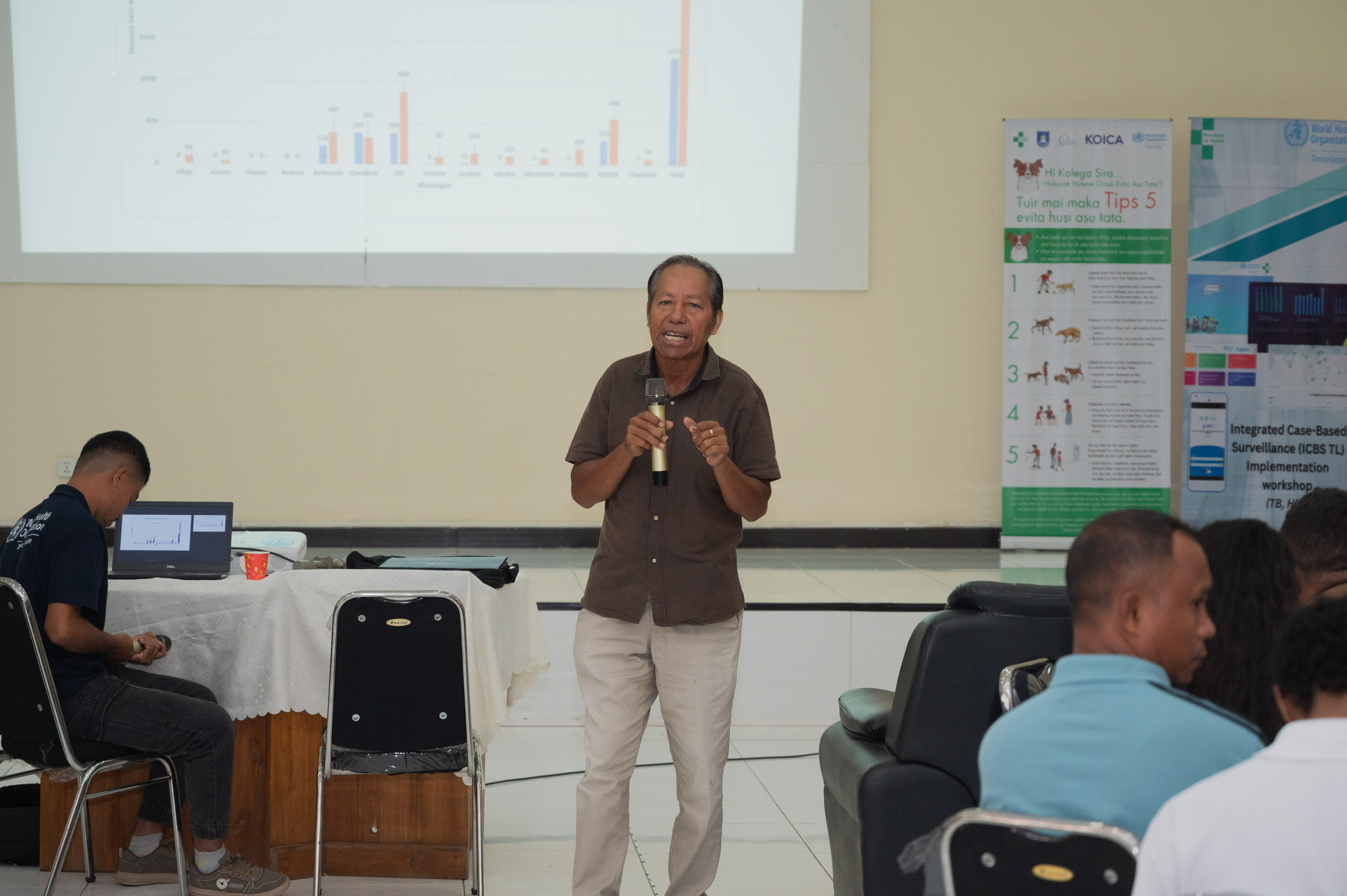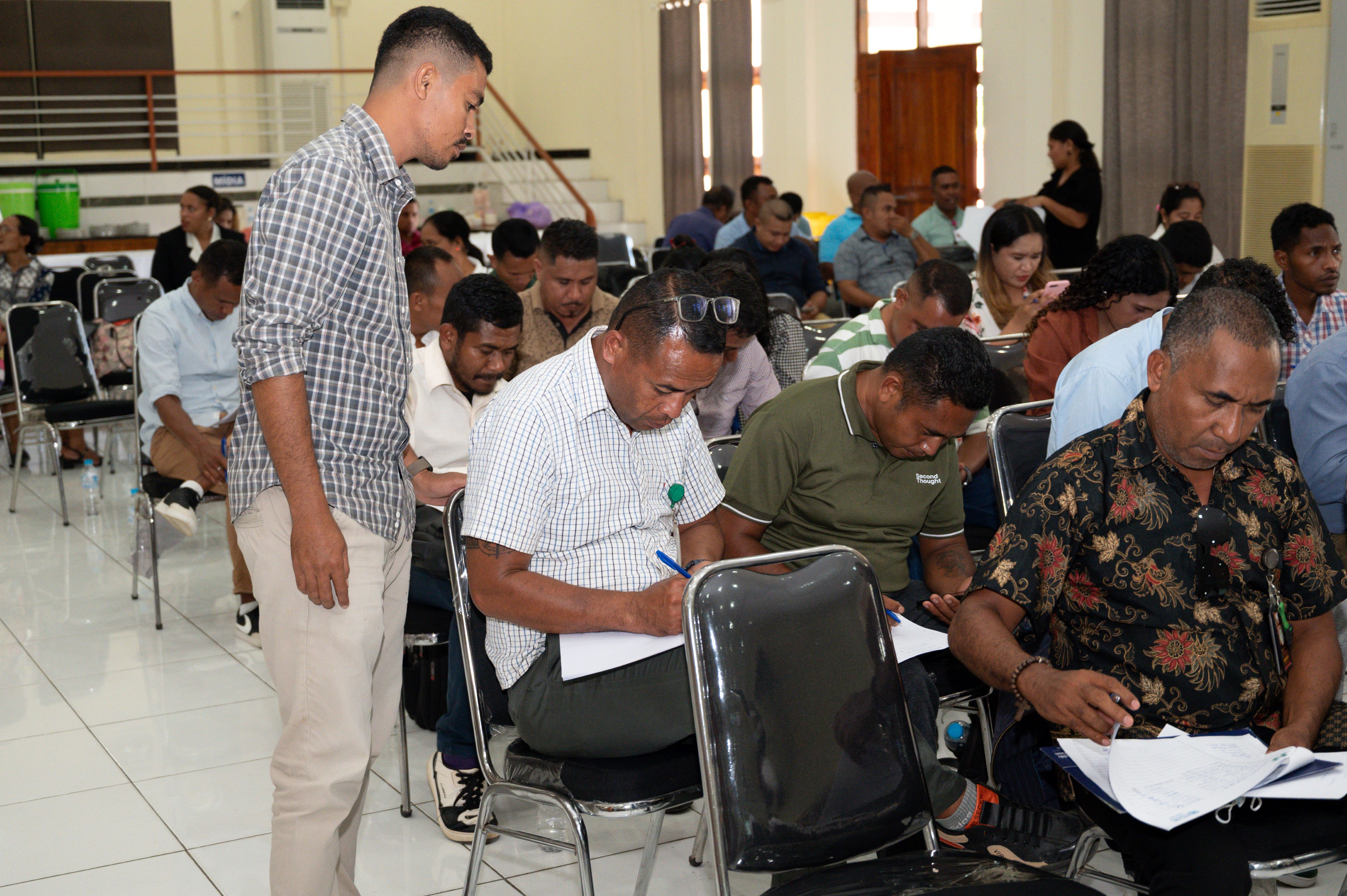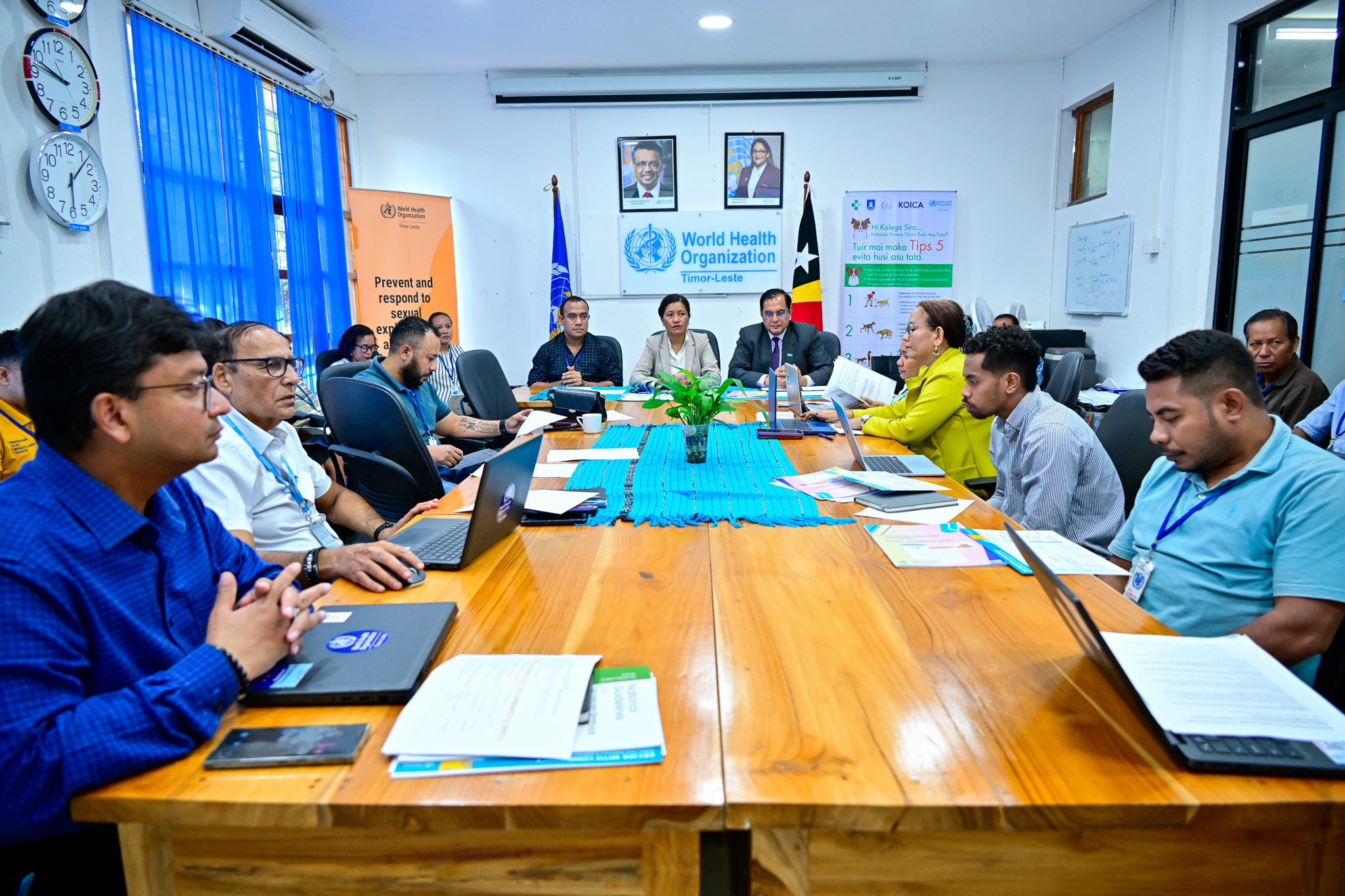Dili, October 30: The Ministry of Health (MoH), in collaboration with the National Rabies Task Force, World Health Organization (WHO) and partners, has successfully completed the training of 500 healthcare and animal health workers from across Timor-Leste to strengthen rabies management and control.
Conducted between 21 and 29 October in Dili, the comprehensive national training focused on building uniform capacity across all levels of the health system on National Guidelines for Human Rabies Prophylaxis and Case Management in Timor-Leste. Since the first ever detection last year, rabies has claimed 22 lives in Timor-Leste — 20 of them in 2025 alone — and remains a public health emergency of national concern.

The Rabies National Taskforce, led by Vice Minister of Health Mr. José dos Reis Magno and under the guidance of Minister of Health Dr Elia A.A. dos Reis Amaral, conceptualized the training with support from WHO.
“The training is to ensure uniform implementation of national guidelines standardized rabies prevention and control practices, across all municipalities, so that when a dog bite victim walks in all health professionals know what they are supposed to do” said Mr Magno.

WHO Representative Dr Arvind Mathur said that the training covered critical aspects of rabies management, including classification of exposure categories according to WHO guidelines, wound washing and treatment techniques, administration of rabies immunoglobulin (RIG), vaccination schedules, and digital surveillance through the Timor-Leste Health Information System (TLHIS) and Integrated Case-Based Surveillance (ICBS) platforms.
As a prelude to the national training, a two-day Master Training of Trainers was held on 15–16 October for surveillance officers, doctors, veterinarians, HMIS/ICBS focal points, and laboratory personnel. Using group discussions, case studies, and hands-on exercises, participants were trained with WHO-developed materials.

Following this, cascade trainings were conducted in three phases for doctors, vaccinators, nurses, surveillance and health promotion staff, veterinarians and health information focal points from both municipal and national levels. The first batch included participants from Covalima, Bobonaro, RAEOA, Ermera, Liquica, Manufahi, and Manatuto (21–22 October), followed by Aileu, Ainaro, Dili, and Atauro (23–24 October) and finally Baucau, Viqueque, and Lautem (28–29 October).
Dr Mathur said the initiative aligns with the recently endorsed National Strategic Plan to Eliminate Rabies, jointly developed by MoH and Ministry of Agriculture, Livestock, Fisheries and Forestry, with technical support from WHO, WOAH, DFAT and DAFF. The plan outlines a unified One Health framework to eliminate dog-mediated human rabies by 2030.
Participants discussed several key operational challenges, including management of multiple bite wounds, administration of RIG in difficult anatomical sites, and protocols for interrupted vaccine schedules. They also raised concerns about vaccine availability at municipal levels, transportation difficulties from remote areas, and gaps in dog vaccination coverage due to limited veterinary staff. Strengthening multisectoral coordination and timely feedback on confirmed cases were identified as critical next steps.
Alongside capacity building, community engagement remains central to the national rabies response. Earlier in September and later in October, MoH and WHO conducted Risk Communication and Community Engagement (RCCE) campaigns in Bobonaro and Oecusse.

Upcoming rounds in Covalima and Ermera in early November will target over 9,000 students across 26 schools, raising awareness about dog-bite prevention and timely health-seeking behaviour, informed the health promotion department of the Ministry of Health.
